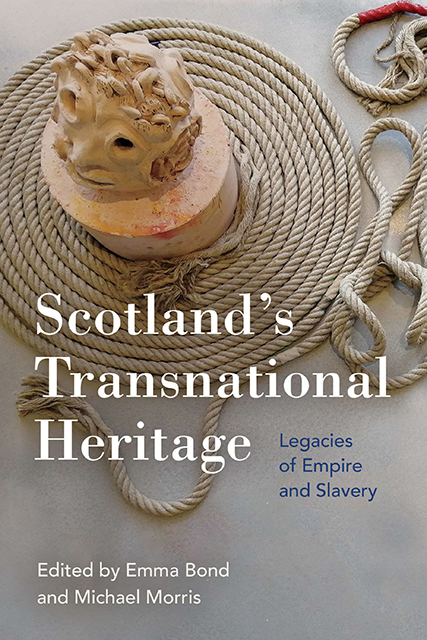Book contents
- Frontmatter
- Contents
- List of Figures
- Notes on Contributors
- Acknowledgements
- Foreword: Fostering Recognition under the Luxury of Amnesia
- Chapter 1 An Introduction to Scotland’s Transnational Heritage: Sites, Things and Time(s)
- Part I Transnational Sites
- Part II Transnational Things
- Part III Transnational Time(s)
- Afterword: Building Solidarity: Moving Towards the Repatriation of the House of Ni’isjoohl Totem Pole
- Index
Chapter 11 - Digital Museum Objects and Transnational Histories
Published online by Cambridge University Press: 25 October 2023
- Frontmatter
- Contents
- List of Figures
- Notes on Contributors
- Acknowledgements
- Foreword: Fostering Recognition under the Luxury of Amnesia
- Chapter 1 An Introduction to Scotland’s Transnational Heritage: Sites, Things and Time(s)
- Part I Transnational Sites
- Part II Transnational Things
- Part III Transnational Time(s)
- Afterword: Building Solidarity: Moving Towards the Repatriation of the House of Ni’isjoohl Totem Pole
- Index
Summary
Introduction
The Transnational Scotland project brought together museum professionals, cultural practitioners and academics in a number of workshops over the course of a year. At our first meeting we were invited to discuss museum objects brought by the curators in attendance; one of these was a cop apron (a heavy-duty protective covering worn by women working in the jute factories) from the collections of Dundee Heritage Trust (Figure 11.1). Workshop participants with specialisms in industrial heritage, literature, museum collections and collecting, digital technology and more, entered into a wide-ranging conversation about the apron, considering its purpose and use, the material from which it was crafted (jute) and how it came to be in the museum’s collections. We talked about the people likely involved in the life of the object – who produced the raw materials, who sewed the apron, who transported it to Dundee (likely from Bengal), who sold it and who bought it. This single object opened up inherently transnational discussions of industrial labour, class, trade routes and empire.
Dundee Heritage Trust’s cop apron also exists in the digital landscape as a digital museum object (a rendering of which can be seen in Figure 11.1) and can be viewed through their online collection portal. It is easy to imagine that this version would inspire similar conversations to those that occurred during the workshop. It also easy to imagine that the digital object itself would sit at the centre of a vast network of connections involving an expanded web of participants, locations and even other digital objects. For museum collections with transnational histories, the benefits of this type of inclusive approach to interpretation are clear.
In this chapter, I will examine the nature of the digital museum object itself, suggesting that its full value, and thus potential, has not to date been recognised. Throughout the digital museum object will be considered as an object with its own materiality, aura and therefore, value. I suggest that this shift in thinking creates opportunities for objects that might be described as transnational, in both their interpretation and display in digital contexts.
- Type
- Chapter
- Information
- Scotland's Transnational HeritageLegacies of Empire and Slavery, pp. 171 - 184Publisher: Edinburgh University PressPrint publication year: 2023



